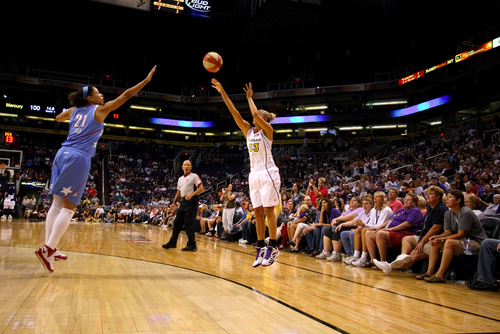Community Programs That Have The Biggest Impact On Fitness
By Dan Peterson, TeamSnap's Sports Science Expert
Health researchers agree that one of the best solutions to our population of overweight kids is to get them moving. Walking, running, cycling, even playing outside cranks up their level of calorie-burning activity. Millions of dollars have been spent on different types of programs designed to get this message out and to create environments, especially in schools, that will motivate kids. But which of these works best? What is the most cost efficient method to make them move? Finnish researchers just reviewed a wide collection of studies to try to compare these “apple and orange” programs on a level playing field to find out. Spoiler alert: trails, pedometers and school-based education win the race.
"The main focus in promoting physical activity should be to get people who are not active to get moving instead of just promoting more exercise to those who are already active," said Virpi Kuvaja-Kollner, a researcher/instructor and doctoral candidate at the University of Eastern Finland.
For a lot of parents, there is a misconception that getting their kids to be more active requires spending money on equipment, gym memberships, trainers, and shoes/clothing. But just getting outside in a safe, scenic area can be enough to make a positive difference. Kuvaja-Kollner and her team set out to compare the public investment in these spaces versus other interventions, including education and equipment.
First, they looked at 2,058 articles on physical activity between May and August 2013, finding 10 studies that addressed large population group interventions. They created a common denominator metric of the per-person, per-day costs of a health promotion activity divided by the number of physical activity hours gained as measured by their metabolic equivalent of task (MET).
"There was a huge variation in the efficiency of the interventions," the study authors reported. "The most inefficient intervention cost almost 400 times more... than the most efficient intervention."
The programs with the most bang for the buck were to create and provide access to more public trails in urban green spaces, along with the distribution of pedometers and school-based education materials to kids. Balancing the size of the project budget with how much it makes kids move will help decide where investments should be made.
The study was published in the American Journal of Health Promotion.
"Studies examining cost effectiveness are limited and more studies are needed," commented Tracy Flood, M.D., Ph.D., director of data for statewide obesity prevention at the University of Wisconsin School of Medicine and Public Health. "This is important because budgetary considerations are a very real part of all community improvement. Having more data on cost-effectiveness would allow for more informed decision-making and buy-in at the county or city level."
To help city planners prioritize where do spend these limited funds, Kuvaja-Kollner suggests adding more recreation choices near populated areas. "They should take into account promoting physical activity by combining walking and hiking trails near public transportation."
NEW! Free Sports Organization Resources
All of TeamSnap's ebooks, articles, and stories in one place. Access Now
Similar Articles:

Researchers Encourage Parents To Keep Kids Active And Don’t Skip Meals
By Dan Peterson, TeamSnap's Sports Science Expert …
Read More

Wheelchair Sports Help Athletes In More Ways Than One
By Dan Peterson, TeamSnap's Sports Science Expert …
Read More

Women Athletes Continue To Be Ignored By Sports Media
By Dan Peterson, TeamSnap's Sports Science Expert …
Read More
